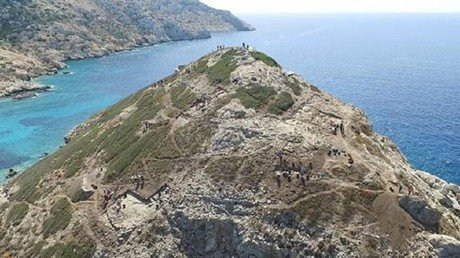Heavy metal diet: Meteorite-consuming microbes could offer clues on how life formed on Earth

Meteorites may not sound appetizing, but for one strange microbe they’re breakfast, lunch and dinner. The creature’s bizarre eating habits could help unlock mysteries about how early life forms endured harsh conditions on Earth.
Metallosphaera sedula, a highly resilient microbe able to withstand extreme temperatures and highly acidic environments, can survive solely on a diet of space rocks, new research published in Scientific Reports has found. The finding not only sheds light on how organisms could survive on other planets, but provides valuable insight into how early life on Earth may have thrived on nutrients imported from deep space.
“Meteorites may have delivered a variety of essential compounds facilitating the evolution of life, as we know it on Earth,” the study said.
Aware that M. sedula is a lithotroph – creatures with a taste for metals and minerals – scientists at the University of Vienna wanted to determine how the organism would take to space rocks, fixing a feast out of a 120-kilogram iron-rich meteorite found in Africa in 2000, known as NWA 1172.

The microbes, which fall under the archaea domain, were applied to sterilized slabs of meteorite and carefully monitored under microscopes, with researchers analyzing the metal ions the creatures freed as they ate.
Compared to organisms that were fed chalcopyrite, an Earth mineral, the meteorite-eaters wolfed down their portions, metabolizing the space rocks and growing at a far faster rate. Consuming the alien minerals “seems to be more beneficial for this ancient microorganism than a diet on terrestrial mineral sources,” said University of Vienna astrobiologist Tetyana Milojevic, who headed up the study.
Also on rt.com Aliens, is that you? Mysterious ‘fireball’ streaks across the sky in Oregon, leaves cops scratching their heads (PHOTOS)Previous research on M. sedula conducted by the same team indicates the organism could also survive in Mars-like soil, “actively colonizing” a miniaturized “Mars farm” constructed by researchers, making it doubly important for understanding how life might function on other worlds.
Like this story? Share it with a friend!















